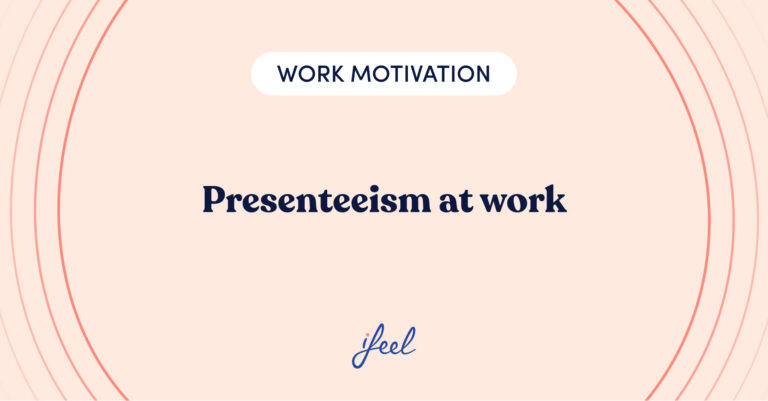To speak of the work environment is also to speak of the different types of work environments that can be found in a company. These types tend to be shaped by the different personalities of the team members that make up the company but, more importantly, by the dynamics that are established between them, a complex combination of interactions between people.
What we mean by dynamics are the results of the relationships between these individuals. Results that change depending on the circumstances, how people are feeling at any given time and where they are in their life cycle.
Another key factor that clearly influences the nature of the work environment is the leadership style provided by managers and team managers. Irrespective of the employees, being in charge of people who are friendly, approachable, consistent, and self-confident is not the same as being in charge of people who are immature, messy, inconsistent, or who panic at the slightest. Leadership styles directly influence different types of work environments generated within an organization.

Different types of work environments based on trust
Many classifications of the types of work environment establish different categories depending on where companies fall on the spectrum: from greater participation and influence of the workforce in corporate decisions to a lower level of participation and, therefore, greater rigidity and structuring in the hierarchy of levels within the organizational chart.
Therefore, the following are the different types of work environments that can be established: authoritarian, paternalistic, consultative, and participative. In the authoritarian type, employees have little or no decision-making power because the management team has little or no confidence in them, while in the participative type of work environment, employees have a high degree of influence on corporate decisions because the management team has a high level of trust in them.
Of course, the different types of work environments do not only imply differences in terms of the propositional or decision-making capacity that a company’s employees have on matters that concern them or on the organization’s general strategies. As they are related to the scope for action, the margin of influence over the product of their work and, of course, the trust that the company (specifically, those who manage it) has in them, their degree of commitment, their involvement, their creativity and, of course, the work environment within the teams are also affected.
In this respect, and taking into account the interest that the previous classification of different types of work environments may have, we can also establish an alternative classification based on the type of bond between employees and the company.
To do so, we will intuitively adopt the types of attachment that the British psychologist and psychiatrist John Bowlby established several decades ago to explain the bonding that, during the first months and years of life, children have with their primary caregivers.
To put it very simply, Bowlby observed that when an infant’s caregivers were always the same, were available to respond to the child’s needs, and did so in a skillful, consistent, and coherent manner, the child established a secure attachment to them. This led the child to feel at ease in the company of its caregivers, to dislike their absence, and to rejoice at their return. In addition, it allowed the child to maintain a healthy distance from them, thanks to which the child could explore his or her environment without the need to constantly check that the adults were still there or to have them always close to him or her in order to avoid feeling helpless.
However, when this type of parenting has not been possible, an insecure attachment style is established. This style could manifest itself directly as detachment from adult caregivers (indifference to their presence, absence, or return), ambivalent reactions (the child was either disrupted when left but not at ease or reacting positively in the presence of caregivers) or, in the worst case, clearly disorganized (with no clear pattern between being good or bad in the relationship with caregivers).
Different types of work environments according to safety level
If we draw comparisons between the attachment theory expressed by Bowlby (discussed in a very simplified way in this article) and the different types of work environments that can be observed within companies, we can differentiate between two large groups: secure work environments and unstable work environments.
1. Secure work environments
They are characterized by a healthy work environment, in which employees generally perceive that they belong to an organization that takes care to protect the physical and psychological vulnerability of the employees.
The degree of trust of managers in employees is good and so is the degree of trust of employees in the corporate structure. There is predictability, not chaos. The company is perceived as a good place to work and the desire to leave at the first opportunity tends to be low or moderate, as it is not seen as necessary.
2. Unstable work environments
They are characterized by a negative work environment. Employees do not trust the company to take care of their well-being or to prevent the psychosocial risk factors that can affect it.
Although appearances may not show it, the affective and relational dynamics that lie beneath the surface are based on mistrust and unease. Managers are likely to be disorganized, inconsistent, unsure of themselves, and with poor leadership skills.
Managers and executives tend to behave inconsistently, alternating expressions of great sympathy and affection with expressions of coldness or passive-aggressiveness.
In unstable work environments (which may tend to be more detached, ambivalent, or highly disorganized), it is common for decisions to have little effect and this makes it impossible to achieve a minimum of predictability, which is what provides security in relationships.

Emotional well-being for companies
At ifeel, we understand that it is not possible to take care of the company without taking care of the psychological well-being of its employees. To do so, we have an emotional well-being program for companies, designed by our team of occupational well-being psychologists with one main objective: to help companies place employee health at the center of their strategy to build their mission statement.
Thanks to this partnership, the people in charge of HR departments can receive personalized, data-driven advice on how to make good decisions in a company to get the most out of the teams they are in charge of and take better care of the psychological well-being of the people in them.
Moreover, this program offers employees a holistic mental health care service structured at different levels according to their needs. This service includes, if required, online psychological therapy with a psychologist specialized in cases like theirs. Try our program today so you can see how it could help you.
We hope you found this post about different types of work environments useful. If you want more information about our emotional well-being program for companies, simply request it and we will contact your team as soon as possible.










